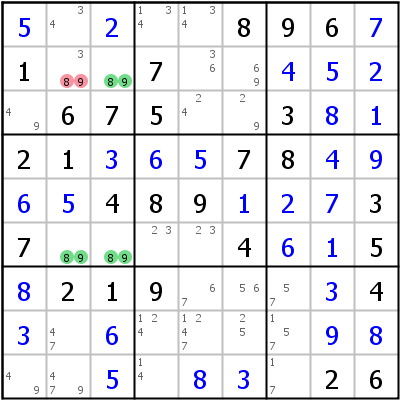I'm having a hard time figuring out exactly what you mean by "not solvable"EDIT: I realise now that the example given doesn't require uniqueness to solve the puzzle, but I'll leave the example below for those interested.
I can give an example of a Sudoku where you can use uniqueness logic to get to the uniquea solution, but if you can't use uniqueness logic there are more solutions. TheHowever, uniqueness constraint causesis not the uniqueness in these situations. Maybeonly way to get to that solution, so this doesn't fall under the rules ofis probably not pertinent to your question though, as the puzzle is still solvable when there isn't a unique solution, it's just no longer uniquely solvable.
The above is taken from http://hodoku.sourceforge.net/en/tech_ur.php, which describes "unique rectangles" in sudoku. The cell R2C2 "must be" 3, as if it were not, we would have a fatal rectangle of 89s, where there are two valid placements of 8s and 9s that have no bearing on the rest of the puzzle. If it's not a 3 then there are multiple solutions. If it is a 3 then there is exactly one solution. So it must be a 3, as there must only be one solution.

